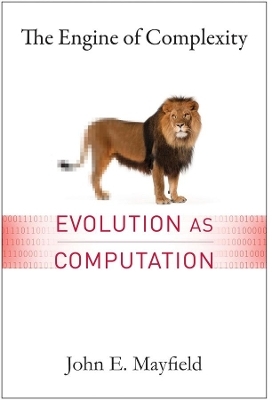
The Engine of Complexity
Columbia University Press (Verlag)
978-0-231-16304-0 (ISBN)
John E. Mayfield is professor emeritus of genetics, development, and cell biology at Iowa State University. He has also taught at the California Institute of Technology, Carnegie-Mellon University, and Harvard University Biological Laboratories. His research focuses on the development of a generalized theory of evolution that relates naturally and easily to fundamental mathematical and physical principles.
Preface Introduction 1. The Problem How is the Earth different? What is information? What is an evolutionary system? What constitutes scientific understanding? How does computer science fit in? How is purposeful complexity explained by science? 2. Computation What is a computation? What does it mean to manipulate information? How is information defined and measured in computer science? Can great complexity be created by short (i.e., simple) programs? Can physical structure be computed? Why have long programs? 3. Structure for Free If physical processes compute, what and where are the programs? How do we explain a grain of salt? How does a solar system form? How do nonequilibrium structures form? Must structures have permanent parts? Is behavior a form of structure? Can avalanches be simulated in a computer? Whence structure for free? 4. Purposeful Structure What can you get by using instructions that you can't get for free? Can you get a watch without a watchmaker? How do instructions encoded in DNA specify structures more complicated than single proteins? Can instructions dictate activity? What about ongoing activity? So, exactly how do we define purposeful structure? 5. Improbability and the Engine of Complexity How do order and disorder relate to each other? How do we reconcile great improbability with existence? Where do instructions come from? How do instructions change our view of object probability? Is life the outcome of a computation? 6. Algorithmic Evolution Can computers learn? What are evolutionary algorithms? Can the rules evolve? How can we visualize what is happening during an evolutionary computation? Is randomness necessary for learning? 7. Evolution Within the Body How does the human body form from a single cell? How is the brain wired? Why isn't the body destroyed by microorganisms? What does copying add to selection? 8. Taking Control of the Cycle Can the engine of complexity accept any form of information? Can variation be controlled? Must selection be natural? Is there any aspect of the cycle that cannot be controlled? 9. Complex Systems What constitutes a complex system? How is an electronic device also a network? What is a biochemical network? What is a genetic network, and what does it do? What is a proteome? What is life? What is a complex adaptive system? 10. Human Learning and Creativity How are we to understand the human mind? Where is the information? How are decisions made? Could our world, and therefore our thoughts, be deterministic? What are some general principles of brain function? What is evolutionary epistemology? What are some current theories? How do we invent? What is the evidence that the engine of complexity plays a major role in brain function? What can we say about the origin of human creativity? 11. Cultural Evolution What is human culture? How do cultures change? How does science work? Economies change, but do they evolve? Do religions evolve? How does the engine of complexity operate in human society? 12. The Evolution of Complexity Can complexity be defined? How is complexity defined by biologists? How do optimization and coevolution fit in? Do resources matter? How does depth figure in? Is there evidence? 13. Past and Present How do engines of complexity get started? What does it mean to be in the middle of a computation? 14. The Future Where is it all going? Are we about to participate in a new implementation of the engine of complexity? Acknowledgments Notes Glossary References Index4
| Zusatzinfo | <B>77 figures and 8 tables</B> |
|---|---|
| Verlagsort | New York |
| Sprache | englisch |
| Maße | 152 x 229 mm |
| Themenwelt | Naturwissenschaften ► Biologie ► Evolution |
| ISBN-10 | 0-231-16304-5 / 0231163045 |
| ISBN-13 | 978-0-231-16304-0 / 9780231163040 |
| Zustand | Neuware |
| Haben Sie eine Frage zum Produkt? |
aus dem Bereich


